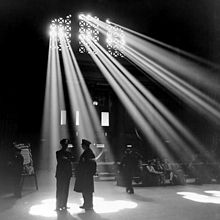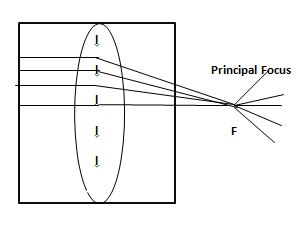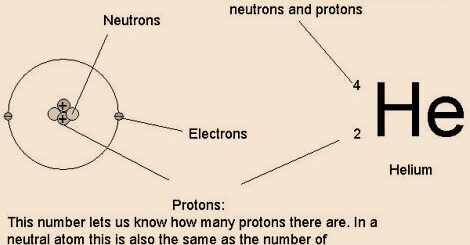Light

Summary
We need light for everything probably except when we sleep. The sun is the earth’s primary source of light. light is essential for the existence of life. Without light we neither get food nor can see anything. The visual ability of human beings and animals is only due to the complex interaction of light, the eyes and the brain. . We are able to see things around us because light falls on them Signals are then passed on to the brain. The brain helps us to understand the appearance, location and movement of the objects viewed.
Light
Light is a form of energy. Light is also essential for photosynthesis in plants. The oxygen we breathe in is produced by plants in the presence of sunlight.
Sources of light

light is a form of energy. Light emerges from different sources. Anything that emits light is a source of light. Sun and stars are the natural sources of light and artificial sources are oil or gas lamp, candle and electricity.
Luminous and non- luminous bodies
The sun, stars and glow worms are luminous bodies as they have light of their own. They are also called Self- luminous bodies.
Bodies that do not emit light of their own are called non- luminous bodies. . For example, the planets and stones.
How does light travel?

light as a ray of light. A ray of light is a narrow path of light. It is represented by a straight line with an arrow head (→). The straight line indicates the path of light and the arrow head indicates its direction. A large number of rays of light is called a beam of light.
Transparent, translucent and opaque objects :

Substances that allow light to pass through them completely and through which we can see the other side clearly are called transparent substances. Glass, clear water and air are some transparent substances.
Substances through which light passes partially are called translucent substances. Tissue paper, frosted glass, butter paper and tracing paper are some translucent substances.
Some substances do not allow light to pass through them at all. They are called opaque substances. Metal piece, stone, wood and rubber are some opaque substances.
Shadows

This dark region is called a shadow. A shadow is the dark region Fig. 5.6 : Shadow formed when an opaque object comes in the path of light. The opaque object obstructs light from falling on a surface. Shadows are formed as light travels in a straight line and does not bend around opaque objects.
Reflection of light

The bouncing back of light from any surface is called reflection.
Reflection in plane Mirrors

When light falls on the mirror directly through the slits, four slits of light are seen on the table. This is because, light is reflected back along the same path. The reflection of any object by a plane mirror is always erect and the same size as that of the object. This reflection of the object on a plane mirror is called image.
Multiple reflection
The formation of many images of the same object is called multiple reflection. This is because the image formed in one plane mirror acts as an object for the other plane mirror.
Refraction of light
When light travels obliquely from one medium to another, it deviates from its original path. This property of light is called refraction.
Spherical Lens
A spherical lens is a piece of transparent material having one or two smooth, curved surfaces.
The different types of lenses.
- Convex lens (Converging lens) : A lens that has two spherical surfaces which is thicker at the centre and tapering at its edges is called a convex lens or a converging lens.

When a parallel beam of light passes through a convex lens, refraction takes place and all the rays of light converge at a point on the principal axis. This point (F) is called the principal focus of the convex lens.
2. Concave lens (Diverging lens)

A lens that has two spherical surfaces which is thinner at the centre and thicker at the edges is called a concave lens or a diverging lens.
The parallel beam of light appears to diverge (spread out) from a point on the principal axis. This point (F) is called the principal focus of the concave lens.
Terms related to spherical lenses
1.Centre of curvature

The center of curvature is the center of the sphere of which the lens is a part.
2.Principal axis

The imaginary line passing through the centres of curvature C1 and C2 is called the principal axis.
3.Optic centre

The optic centre is a point in lens through which the incident light passes through without any deviation.
4.Principal focus

The principal focus principal focus Fig. 5.27 of a lens is a point on the principal axis where rays travelling parallel and close to it, after refraction converge to or appear to diverge from a fixed point.
5. Focal Length

The distance between the principal focus and the optic centre of the lens is called the focal length.
6.Radius of Curvature

The distance between the centre of curvature and the optic centre is called the radius of curvature.
Ray diagrams for convex lens :
Ray diagrams are geometrical constructions which help us to understand the position, size and nature of the image formed when the object is placed at specific position.
Rule 1 : Any ray of light travelling Fig. 5.30 parallel to the principal axis, after refraction passes through its principal focus.
Rule 2:Any ray of light passing through the principal focus, after refraction travels parallel to the principal axis.
Rule 3:Any ray of light that Fig. 5.32 passes through the optic centre of the lens, passes without any deviation.
Difference between real image and virtual image
| Real image | Virtual Image |
| Can be caught on a screen | Cannot be caught on a screen. |
| Rays of light after refraction meet at a point. | Rays of light after refraction appear to meet at a point. |
| Always inverted. | Always erect. |
Dispersion of light

The splitting of white light into these color’s is called dispersion. Example Rainbow
Exercises
I. Four alternatives are given under each complete/incomplete statement. Choose the correct answer and put a tick () mark against it.
- In a pin hole camera, the image formed is
a) erect b) inverted and enlarged
c) enlarged d) small and inverted
Ans: Small and inverted
- The Centres of two imaginary spheres of which the lens
is a part is called
a) principal focus b) Centre of curvature
c) optic Centre d) principal axis
Ans: Centre of curvature
- The distance between the optic centre and the principal
focus is called
a) principal focus b) focal length
c) radius of curvature d) principal axis
Ans: Focal length
- The nature of the image formed after refraction in a
convex lens when the object is placed at C1 is
a) real, inverted, diminished
b) real, inverted, same size
c) real, inverted, enlarged
d) virtual, inverted, diminished
Ans: real, inverted, diminished
II.Fill in the blanks with suitable words
- Objects that do not emit light of their own are called
Non-luminous bodies. - We can see clearly through translucent objects.
- Regular reflection occurs only on smooth surfaces.
- The distance between the optic Centre of a lens and its
principal focus is called focal length
III. Underline the word which does not belong to
the group :
- stone, cardboard box, glass, aluminium sheet.
- sun, moon, stars, bulb
IV. Give two examples for each of the following
a.non-luminous body.
Ans Star and moon
b.translucent object.
Ans: Butter paper, tissue
c.source of light.
Ans:Light bulb and Lamp




























